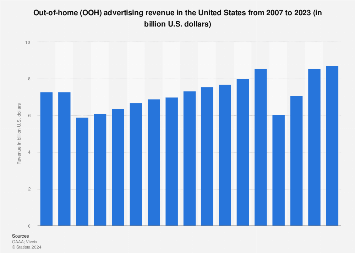In the fast-paced world of advertising, out-of-home (OOH) strategies lead innovation, transitioning from traditional to digital. The Evolution of Out-of-Home Ads pays homage to billboards’ past and embraces digital mediums, expanding creative horizons and engaging with the audience more personally and in real-time. Next, we’ll explore OOH advertising.
Measuring the Impact of OOH Advertising
In the realm of Out-of-Home advertising, where vast and varied strategies stretch from billboards in bustling city centers to digital screens in tranquil suburban malls, the imperative to gauge their impact accurately has never been more critical. This necessitates a forward-thinking approach, combining traditional metrics with innovative technological solutions, such as geolocation data and AI-powered analytics. By doing so, advertisers can not only assess the reach and frequency of their advertisements but also obtain a deeper understanding of consumer behavior and engagement levels. This dual focus on quantitative and qualitative measurements paves the way for advertisers to refine their campaigns, ensuring they resonate profoundly with their intended audience, all the while optimizing return on investment. In this light, Measuring the Impact of OOH Advertising emerges not just as a challenge but as a golden opportunity for brands to underscore the effectiveness of their ad spend in an unequivocally competitive landscape.

Out-of-Home advertising is undergoing a significant shift, moving from a traditional emphasis on brand awareness to a more nuanced focus on driving conversions. This evolution reflects a deeper understanding of consumer behavior and the pathways to purchase. By integrating interactive technologies such as QR codes, NFC, and AR within OOH advertisements, brands are not just capturing attention but are also creating direct channels for consumer action. These technologies encourage instant engagement, allowing consumers to move seamlessly from viewing an advertisement to undertaking an action such as making a purchase, signing up for more information, or navigating to a website, thereby simplifying the conversion process. For advertisers and brands willing to innovate and adapt, this strategic pivot from awareness to conversion in the realm of OOH advertising represents an exciting opportunity to connect with their audiences in more meaningful and impactful ways, ultimately driving higher ROI and forging stronger customer relationships.

The surge in digital outdoor ads is evident. From 2016 to 2022, the number of digital billboards in the U.S. rose by 80% to 11.5 thousand. This trend attracts brands, opening up new promotion avenues. A 2022 survey found DOOH to be one of the most innovative media for advertisers in the U.S.
Strategically integrating advanced tech in Out-of-Home advertising goes beyond catching the eye; it’s about creating lasting connections. Augmented Reality (AR) turns billboards into immersive portals, blending physical and digital realms for engaging experiences. Digital billboards use programmatic ads for timely, relevant content, maximizing impact through personalization. These innovations in OOH advertising captivate audiences, strengthening the bond between brands and consumers.
Future Trends in OOH Advertising
Anticipating the future directions of outdoor advertising is essential for staying ahead in a competitive market. This section will explore emerging trends such as the integration of Internet of Things (IoT) devices, the growing emphasis on experiential marketing, and the adoption of AI for predictive analytics in campaign planning. Through this forward-looking lens, we underline the evolving landscape of OOH advertising, poised to leverage technological advancements for even greater impact and engagement.
Out-of-Home advertising is evolving with innovative tech like AR and programmatic ads, enhancing brand creativity and consumer engagement. By measuring impact effectively, brands craft resonant campaigns for high returns. The future? Interactive, personalized, and AI-driven. OOH ads offer new ways for connection and conversion.

